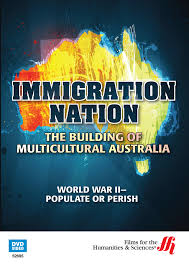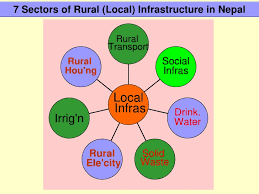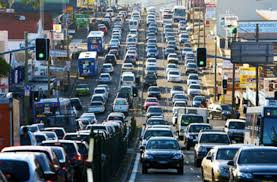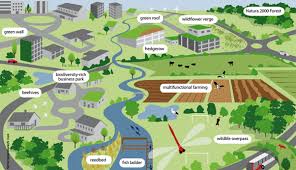"Emotional excitement about racism, citizenship and jobs is distracting the community from the real issue of our immigration program. The big question is, how many Australians is enough?" (The opening paragraph of an article in The Age by John Stevens of 28 June 1988.)

Because of the behaviour of some of its leading players, politics in Australia has lost the respect of many people. The main contributors to this have been the revolving door nature of the leadership of the governing party of the day; the behaviour of those on the floor of the chambers during Question Time; a number of situations in which individual politicians have been seen to rort the system; and, for much of the last ten years, the crass ‘oppositionalism’ of the major party not in government.
One of the results has been that fewer and fewer people have maintained or developed an active interest in day-to-day political processes and decisions.
This is a regrettable situation and one which reduces the likelihood that the best decisions will be made. The greater the proportion of the people affected who withdraw from involvement with policy decisions, the greater the likelihood that what is decided will reflect the views of only those who remain engaged because they are paid to do so or because they have narrow vested interests.
An essay in defence of politics would remind people that the well-being of every one of them is affected by political decisions. So it is best not to turn away. In fact it is irresponsible to do so.
The decisions made by politicians affect every aspect of a family’s income and employment status, their access to education, transport and health services, and their rights and responsibilities as members of the Australian community.
As well as being important, political decisions are often very difficult. Politics is a process of conflict resolution through negotiation, conciliation, and compromise. By definition it requires the interaction of citizens. It is a power struggle that determines how limited resources are allocated. There will always be winners and losers.
The whole point of Bismarck's assertion that "politics is the art of the possible, the attainable — the art of the next best” is that the majority of politicians feel constrained by the views of the people they represent.
(For a modest discussion of an alternative view, as expressed by Edmund Burke in the Bristol Defence (Nov. 1774), see Parliamentarians and the plebiscite posted to this blogg on 4 November 2016.)
The fact that politicians will be guided by the views of their people is often seen as a problem, because of short electoral terms and political parties not wanting to lose influence or office. In fact, notwithstanding Burke, the responsiveness of politicians to the will of the people is the essence of the democracy with which we live.
To remind ourselves how hard it is for representative politicians to choose between good causes, imagine how disparate the results would be if each of us was asked to divide $100 between public school education, foreign aid, health research, and a blackspot program for telecommunications.
The political process is not only the means by which immediate choices are made between current potential expenditures. Politicians are also directly responsible for steering the national community to a new reality, year on year, by shaping the way major developments occur and the speed at which they happen. Today’s parliamentary processes are shaping such disparate and important things as the pace at which Australia shifts to renewable energy, and whether people will in the future be legally able to be involved with assisted dying.
To serve the national interest, politicians and the political process need the public’s view on issues which do not have a right or wrong answer. One of these on the political agenda again right now is the size of Australia’s immigration program.
The public should be fearful of the situation in which, as the Federal Election draws near, the two major parties become locked in to differing views on the number of people who should be admitted each year through immigration.
Because it is one of those matters where no certain ‘right number’ exists.
For one thing, there may be different views of the criteria by which the number should be set. Historically it has been the case that the size and composition of Australia’s immigration program has been set for parochial, national, Australian political reasons.
But in the context of a new world order relating to refugees and migration, it could be argued that Australia’s decision should be based, at least in part, on its international responsibility – its capacity to contribute to the solution of a global phenomenon that frequently has tragic consequences.
The scale of this phenomenon is unprecedented. It affects populations around the globe, but it was the situation in the Middle East and the Mediterranean that brought it to the public’s attention. In 2015, at the height of Europe’s migration crisis, more than 7,000 people landed illegally every day at the Greek islands that face Turkey. That year, the number of people making landfall on the Greek islands peaked at more than 850,000. There were also land routes to Greece through the Balkans.
Italy also bore a heavy load.
As Greece and Italy responded with more aggressive policies to prevent migrant boats from reaching their ports, Spain became a more common destination.
At a time like this, it might be seen as irresponsible for Australia to accept only as many migrants as are compatible with its own economic needs.
Even assuming the simple premise that Australia’s immigration policy should be determined only by its own national need, the situation is still not at all certain. Estimates of Australia’s optimum population have varied widely over the years, ranging from 10 million to 480 million.

Sometimes explicit recognition has been made of the balance between Australia’s population and the continent’s ecological sustainability, at other times that link has not been made.
The 1978 National Population Inquiry saw levels of 50 to 60 million as “manageable”. In 1988 the FitzGerald Inquiry set out to justify a high rate of immigration and sought a justification which would appeal to all Australians; in particular that it should deliver economic benefits. Then, as now, there was emphasis on the level of skills possessed by migrants to Australia and the economic need for those skills.
Its recommendation was for an annual intake of 150,000 gross, or 125,000 net.
A study published in 1994 by the Australian Academy of Science concluded that ” … the quality of all aspects of our children’s lives will be maximised if the population of Australia by the mid-21st century is kept to the low, stable end of the achievable range, i.e. to approximately 23 million.”
In August 2018 we passed 25 million.
Australia’s population has continued to grow by around a million every three years. That is an annual growth rate of about 1.7 per cent, compared with a world average of 1.1 per cent, with most developed nations below this average.
In June 2010, Julia Gillard said she would not pursue Kevin Rudd’s ‘big Australia’ target of 36 million by 2050.
Currently the conventional wisdom is that 190,000 is the number of new permanent migrants each year which will be optimal for the nation’s economic output per capita.
This number is based on economic modelling and should be seen as a compromise between the competing theories of various economic modellers and thinkers.
And it should be remembered that, if all the economists in the world were laid end to end, they would still not reach a conclusion.
One element of the current debate is the proposal that a major proportion of immigrants should settle in regional areas and the major cities whose infrastructure and employment situations are in good shape to receive them (Adelaide is said to be in this category).
There is nothing new in the problems for Sydney and Melbourne resulting from immigration. The article by John Stevens in The Age over 30 years ago reads, in part, as follows:
“Far from feeling Australia’s empty spaces, immigrants will greatly strengthen our position as the world’s most urbanised community. Immigrants are mostly city folk, uncomfortable in the Bush. They go where work is available and where ethnic communities are established.”
Between 1981 and 1986 Sydney and Melbourne took about a third of new arrivals; these days three-quarters of new arrivals go to Sydney, Melbourne and south-east Queensland. In the 1980s more than eight out of every 10 overseas born residents of less than five years in Australia lived in cities of 100,000 people or more. Over sixty per cent of Melbourne’s recent population growth has been due to net overseas migration, and for Sydney it has been over 80 per cent.

The report John Stevens referred to in 1988 noted that water is the major obstacle to a much bigger population. It is not that we have insufficient overall, but it is in the wrong places. To reach 50 million Australia would need either massive investment to bring water from Northern Australia and Tasmania to the big cities or a major population redistribution.
That same report, written by Tom Havas, a public servant appointed to the FitzGerald Inquiry Secretariat, noted the absence of effective decentralisation programs and concluded that:
"- - it is evident that immigration cannot be used to change historic settlement patterns".
Doctors from overseas have been subject to mandatory requirements to serve for 5 to 10 years in specified rural and remote areas before being able to practise under Medicare in the major cities. Some people believe that, if it is okay for doctors, why not for other small business proprietors? For teachers and nurses, taxi drivers and garage mechanics?
Farms that need substantial amounts of casual labour for a short period each year pose quite a different challenge. Currently the National Farmers Federation (NFF) is pushing for a new visa for casual workers in agriculture, while others believe that unemployed Australians should be the first to have the opportunity – or the obligation – to supply such labour.
The NFF believes that two existing schemes to bring Pacific Islanders and Timorese to Australia to work in regional areas (the Pacific Labour Scheme and the Seasonal Worker Programme) are too bureaucratic and inflexible. The case for a new agricultural visa is apparently being considered. What’s your view?
The best decision on this and other aspects of the immigration debate will and must be informed by the public’s views, not just by those interest groups directly involved. There is no categorical ‘right number’ in these situations.
The decisions made will contribute to the type of society Australia is, and its role in the region and the world.
If Australia wants to be a welcoming, compassionate, inclusive, multicultural country, its people will need to press the case.
This will require them to be engaged in politics, despite its poor current reputation. People must speak out in public forums. They must express their support for politicians who promote views with which they agree. And they must proclaim their opposition and disgust when they hear or see views on policy matters that trouble them.

